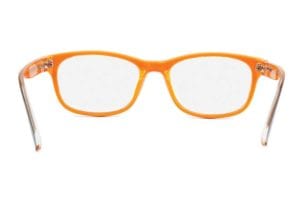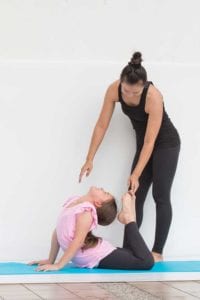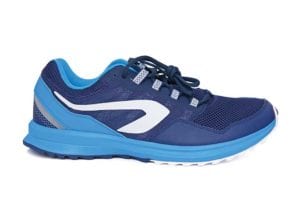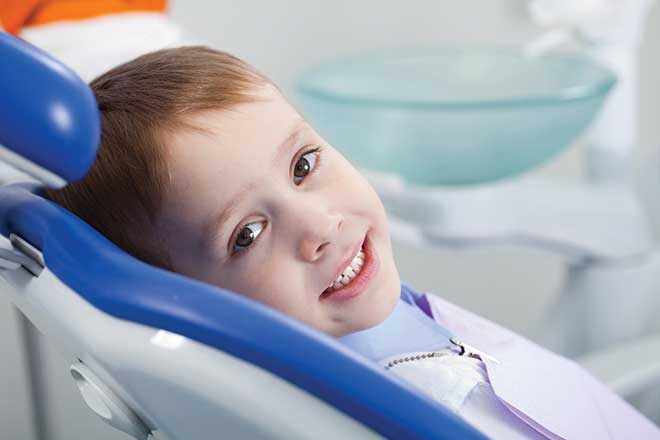While often exciting, these changes can raise a lot of questions and concerns for parents. Less obvious changes, like those that can happen with teeth and eyes, can sometimes go unnoticed, and busy lifestyles (for both kids and their parents!) can make it difficult to determine if every health need is being met. We’ve talked with local experts about what parents should look out for to keep kids happy and healthy.
eye health
Today, eye health is considered carefully as children spend more time looking at screens. To prevent eye strain, parents can enforce the 20-20-20 rule (for every 20 minutes spent looking at a screen, spend 20 seconds looking 20 feet away), and school eye exams can check for common vision problems. But is this enough to keep kids seeing clearly?
early tests
An ophthalmologist is likely not going to be the first step in examining kids’ eyes. Dr. Steven Goodrich of Mercy Clinic Pediatric Ophthalmology explains that even before children enter school, they need multiple vision screenings. “Pediatricians and family care doctors generally screen infants and toddlers,” he explains. There are also vision screenings provided by community organizations like Delta Gamma and Lions Club International that can provide additional testing, he points out. “These screenings and interviews with parents determine whether referral to an eye doctor is appropriate,” he says.
Three is a good age for parents to start thinking about children’s vision, says Dr. Oscar Cruz, a SLUCare ophthalmologist and professor of ophthalmology at Saint Louis University School of Medicine. He explains that while an infant’s vision is continually developing, a child should be able to see 20/20 by age 3. “If there is a strong family history of eye problems, parents should consider visiting the eye doctor before the child starts school,” he advises. Otherwise, screenings by the primary care doctor or at school are likely enough, he says.
warning signs
Even with screenings, parents should be on alert for changes to their children’s vision. Goodrich and Cruz both list excessive squinting, decreased school performance, needing to get close to objects and unusual eye movements like unsteadiness of gaze as indicators of eye problems. They also recommend that parents look out for persistent strabismus (crossed eyes) and amblyopia (lazy eye). “All children cross their eyes at some point, but if it’s happening more than 50 percent of the time, it needs to be evaluated,” Cruz says.
Goodrich says that photographs can offer insight. Red eyes in a photo relate to the eyes’ red reflex, something tested in vision screening. “If there is a difference in the reflection, it can mean that one eye may be more near- or farsighted,” he says. “That’s the most common explanation for an asymmetric red reflex.” The light reflected from pupils in photographs also can be a way to see if the eyes are straight or misaligned, he says. Goodrich notes that most often these photographic differences are due to other circumstances and are not necessarily a cause for concern.
corrective measures
Glasses are most likely to be the first line of intervention. “Refractive errors are treated with glasses, or contacts can be used,” Goodrich says. Refractive errors include common conditions like nearsightedness, farsightedness and astigmatism (an imperfection in the curvature of the lens that often causes blurry vision). He also explains that if one eye is dominant, glasses may not be enough to correct the problem. Instead, patching or medication may be required to help the nondominant eye develop vision. Eye muscle surgery may be required to correct alignment issues like strabismus and amblyopia, Cruz says.
physical activity
 Generally speaking, kids have exercise built into their day through recess, other outdoor ORTHODONTICS play, P.E. class and organized sports. However, busy schedules and free time that turns into screentime mean children and adolescents may not be getting the amount of physical activity they should.
Generally speaking, kids have exercise built into their day through recess, other outdoor ORTHODONTICS play, P.E. class and organized sports. However, busy schedules and free time that turns into screentime mean children and adolescents may not be getting the amount of physical activity they should.
making time
Perhaps the biggest challenge to meeting physical activity goals is finding the time. Between school, homework and extracurricular activities, playing outside or even taking a walk may get pushed aside. Mona Langenberg, president of GO! St. Louis, suggests building physical activity into your routine. “Combining activity with something you’re already doing instantly fits it into your schedule,” she explains. “If you’re going to the store, walk there if possible. Or start walking the kids to school.” Being physically active doesn’t require structure or special equipment. “All you need is a pair of shoes to run, walk or hike,” Langenberg says. “It’s such an easy thing to do—no special skill is needed.”
lasting benefits
Sports have been known to have a range of physical, emotional and interpersonal benefits for kids, including developing motor and social skills, building self-confidence and learning sportsmanship. Even outside organized sports, activity has more than physical advantages for kids. According to Langenberg, it’s also an important way for them to learn about their capabilities. “Moving and getting outside helps them understand their potential,” she says. “They learn the importance of their own strength and can set goals for themselves.” She also explains that getting kids involved at a young age helps them develop healthy habits that can be carried into adulthood. “The most important thing kids can do to lead a healthy lifestyle is set themselves up to be life-long active people,” she says. “The focus should be on finding activities they are comfortable with and enjoy doing.
activity guidelines
The U.S. Department of Health and Human Services recommends children and adolescents be active for an hour or more each day. Activities should be age appropriate and varied for the maximum health benefits.
aerobic
Most of the time should be spent doing moderate or vigorous aerobic physical activity, which gets kids’ larger muscles moving and improves cardiorespiratory fitness.
Ex: running, hopping, dancing, skipping, jumping rope, swimming, bicycling
muscle strengthening
These activities strengthen muscles by making them work harder than normal.
Ex: climbing, playground equipment, climbing trees, playing tug-of-war, lifting weights, working with resistance bands
bone strengthening
By producing a force on kids’ bones, most often by impact with the ground, these activities promote bone growth and strength. Bone-strengthening activities also can be aerobic and muscle-strengthening.
Ex: running, jumping, basketball, tennis, hopscotch
orthodontics
Braces are not uncommon for teens and preteens. But when is the best time to visit an orthodontist? Dr. James Galea of Cardinal Orthodontics says going at a younger age can have major benefits for kids. He points out that the American Association of Orthodontists suggests an initial examination around age 7 to ensure the transition from baby to adult teeth goes smoothly. “Starting early helps identify problems so you can create a plan to stop future damage,” he explains. “The biggest benefit is preventing these issues from continuing throughout the patient’s life.”
 common problems
common problems
According to Galea, one of the most common reasons for an early set of braces is a crossbite. He explains that this can cause excessive tooth wear or other harm. Protruding front teeth are another issue he commonly sees. “The adult front teeth typically come in around the age of 6,” he says. “Adult teeth need to be protected. If the front teeth protrude, they easily can be damaged during play.” Other problems include extra teeth that prevent normal development and adult teeth simply not coming in the right way, he says.
One problem that doesn’t always require correction is spaces, according to Galea. “It’s better to have spacing than crowding,” he says. “If it’s just a gap in the front, it would not require treatment.” He explains that correcting gaps depends what makes the patient feel comfortable. “It is not uncommon for parents to bring in children because they are being teased,” he says. “We take that very seriously. Having a good smile can help increase confidence.”
beyond headgear
When thinking about orthodontic appliances, some adults may have flashbacks to their own uncomfortable headgear. Galea says such apparatuses are so uncommon now, they barely merit mentioning. “Regular braces can do a lot things,” he says. “A modified version works very well for young patients.” He mentions that other appliances for kids include palatal expanders to widen the upper jaw and a lingual arch, which keeps space for adult teeth when baby teeth are prematurely lost. “If we don’t do anything, sometimes other teeth can move in, leaving no room for the tooth that actually belongs there,” he explains.
While Invisalign is a popular product for teens and adults, Galea does not recommend it for kids. “If you’re very young, you still have baby teeth to lose,” he says. “Invisalign uses a sequence of aligners to slowly adjust teeth. Sudden changes to the teeth, like losing baby teeth, mean the aligners may not fit correctly, making the treatment less effective.” He adds that Invisalign has to be worn to be effective. “Not all children will be good about keeping the aligner in,” he says.








